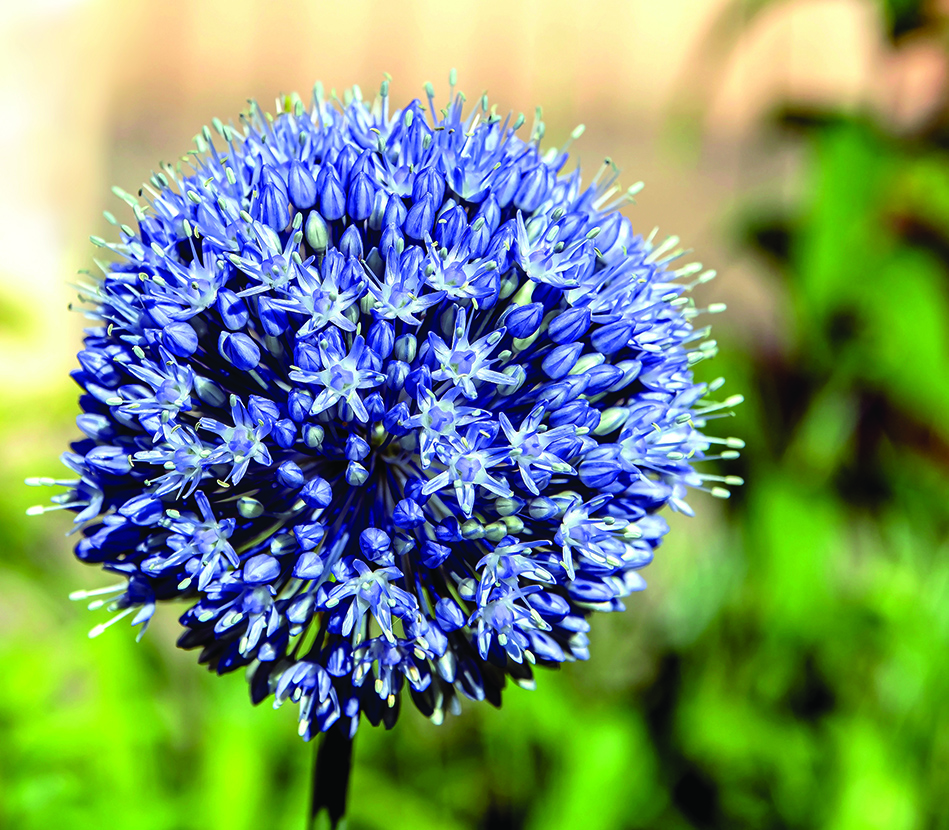Admirable Alliums
08 Sep 2021
Plant these bulbs in fall for spectacular spring blooms
By Carol Brock
“Tall and elegant” is how Brian Wheat of Lafayette Florist describes alliums. Indeed, the globe-shaped flowers are often regal shades of purple floating atop sturdy stems. Most alliums are tall—one variety grows up to 5 feet—but some are just inches in height.
 The majority of alliums are bulbs, and all are members of the onion family. Their spherical flowers are actually clusters of individual blooms in shades of purple, blue, red, pink, yellow and white. With so many colors and heights to choose from, alliums are cheerful elements that add “wonderful texture to a garden,” says Bill Melvin, owner of Ecoscape Environmental Design in Boulder.
The majority of alliums are bulbs, and all are members of the onion family. Their spherical flowers are actually clusters of individual blooms in shades of purple, blue, red, pink, yellow and white. With so many colors and heights to choose from, alliums are cheerful elements that add “wonderful texture to a garden,” says Bill Melvin, owner of Ecoscape Environmental Design in Boulder.
Alliums are easy to grow and maintain. Plant bulbs in late September or six weeks before the ground freezes, at a depth of two-to-three times the bulb’s diameter, with the pointy end facing up. Alliums prefer full sun, but tolerate partial morning or afternoon shade, and well-drained soil is a must. Plants that grow from bulbs need their foliage to produce energy for the next year’s flowers, so let the leaves die back naturally, then gently tug on them to remove them.
Most alliums are perennials that happily self-seed, but they aren’t considered invasive. Deer, rabbits and squirrels avoid them—think onion breath!—but allium flowers don’t smell; only crushed leaves offer a mild scent. Pollinators adore alliums, but you shouldn’t plant them if you have curious pets, as they’re toxic to dogs and cats when ingested.
“Some suppliers sell mixes of alliums in various heights and colors,” notes Paul Hartman of Changing Landscapes. Here are his and other landscapers’ favorite picks for planting this fall.
Giant Onion (Allium giganteum)
This plant is big and bold—up to 5-feet tall, with softball-sized blossoms up to 8 inches wide. The lilac-colored flowers emerge in spring and last through early summer. For strong visual impact, plant the bulbs in groups, 8 to 12 inches apart to give these giants room to grow. Drought tolerant and pollinator friendly, Giant Onion needs protection from strong winds and the blooms make excellent cut flowers. Like most alliums, the leaves yellow quickly—even before the plant’s final flowering. If that’s bothersome, plant perennials nearby to shield dying foliage.
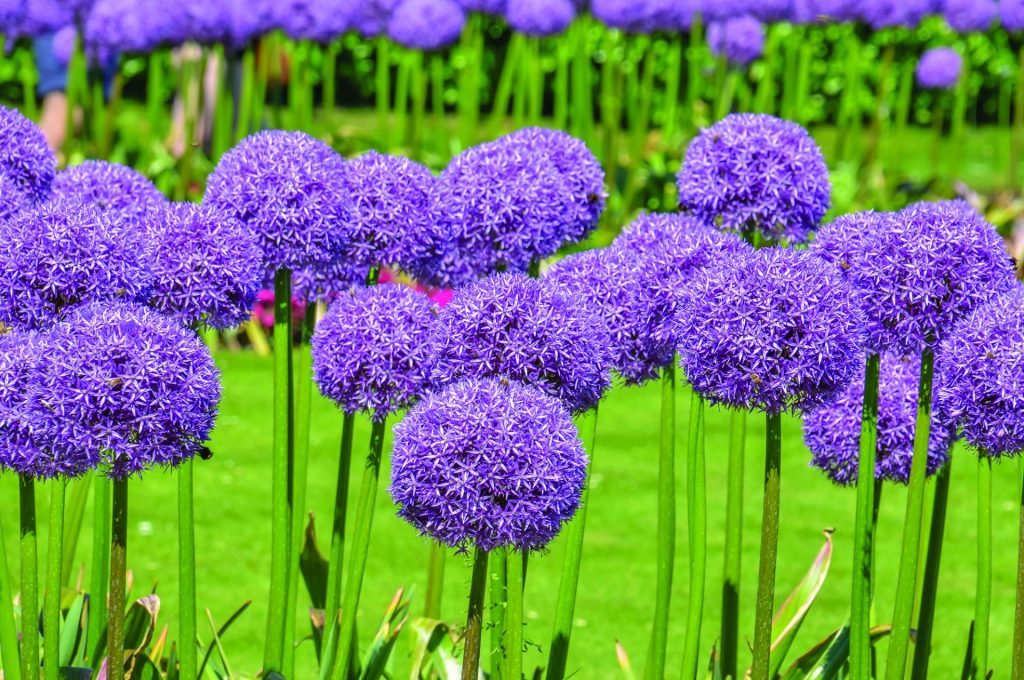
Ornamental Onion (Allium ‘Globemaster’)
This onion’s striking magenta blooms consist of dozens of small, star-shaped flowers that form an incredible 10-inch-wide globe. A cousin to the Giant Onion, Ornamental Onion grows to a height of 3 feet and blooms from late spring to early summer. The pretty seed heads are ornamental as well, and last for weeks after the flowers fade. Just like its cousin, Ornamental Onion is visually breathtaking when planted in sweeping drifts, but give the bulbs space to grow by planting them 8 to 12 inches apart.
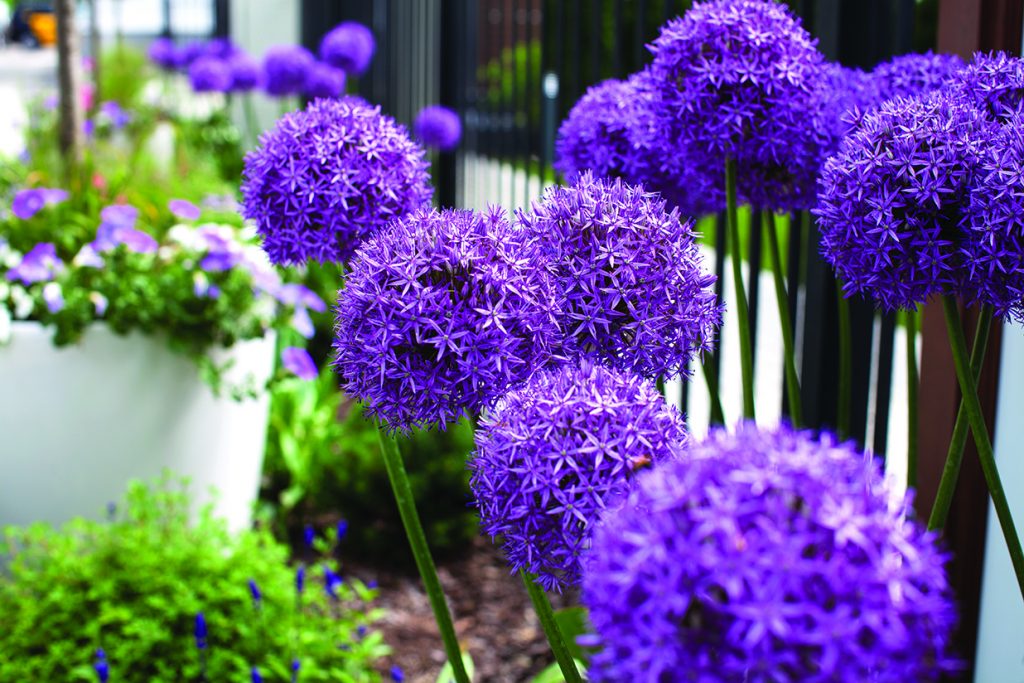
Mount Everest Allium (Allium stipitatum ‘Mount Everest’)
This onion is true to its name, with snow-white flowers that tower above the garden at heights of more than 3 feet. The star-shaped, 4-inch-wide blooms form tightly packed, long-lasting globes that are lovely on their own, or nice contrasts to purple alliums. In fact, the Royal Horticultural Society bestowed its Award of Garden Merit on the Mount Everest cultivar.
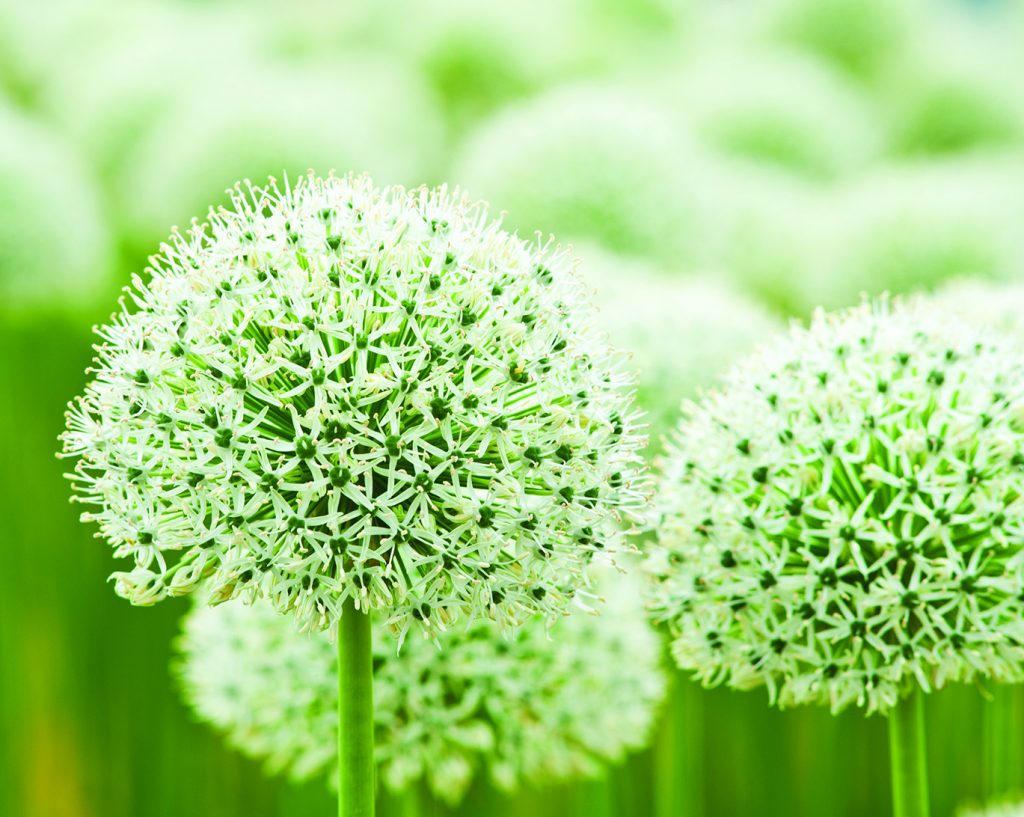
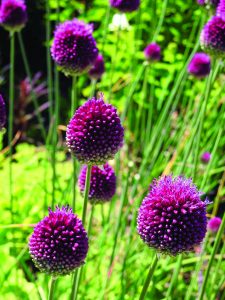
Drumstick Allium (Allium sphaerocephalon)
The egg-shaped flowers of Drumstick Allium change colors dramatically as the season progresses. They start off green, turn pink, and end up rosy-purple. Perfect for rock gardens, sunny beds and borders, and even containers, Drumstick Allium grows up to 2 feet on sturdy stems perfect for cutting. The flowers last well into summer and readily self-seed, so deadhead spent blooms if you don’t want this plant to spread. Dig and divide the bulbs after the flowers die back to prevent overcrowded clumps. You’ll need to overwinter container-grown bulbs in a freeze-free location.
Purple Rain Allium (Allium ‘Purple Rain’)
A cross between Purple Sensation Allium (another nice garden choice) and Allium Cristophii, the Purple Rain Allium gets it height and coloration from Purple Sensation and its open-structured flower form from Allium Cristophii. The plant’s deep-purple blooms appear in June—a little later than most alliums—and are irresistible to bees, moths, butterflies and other pollinators. The vivid blossoms sit atop 2- to 3-foot-tall stiff stems and make perfect cut flowers.

Blue Globe Onion (Allium caeruleum)
Blue flowers are relatively rare in gardens, so this azure allium is a showstopper in perennial borders and rock gardens. At 1- to 2-feet tall with 1-inch-wide blossoms, Blue Globe Onion is an easy-care plant that thrives in full sun and dry soil, so never plant it in irrigated areas. Native to Central Asia, the sky-blue, star-shaped flowers arrive in late spring and are particularly attractive to butterflies.
